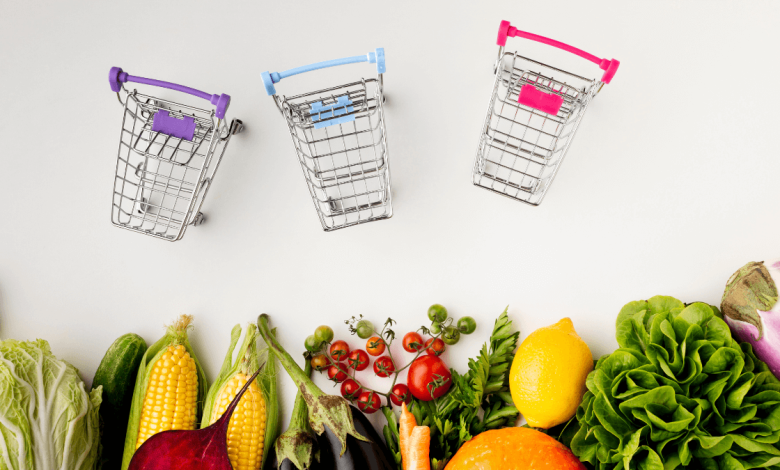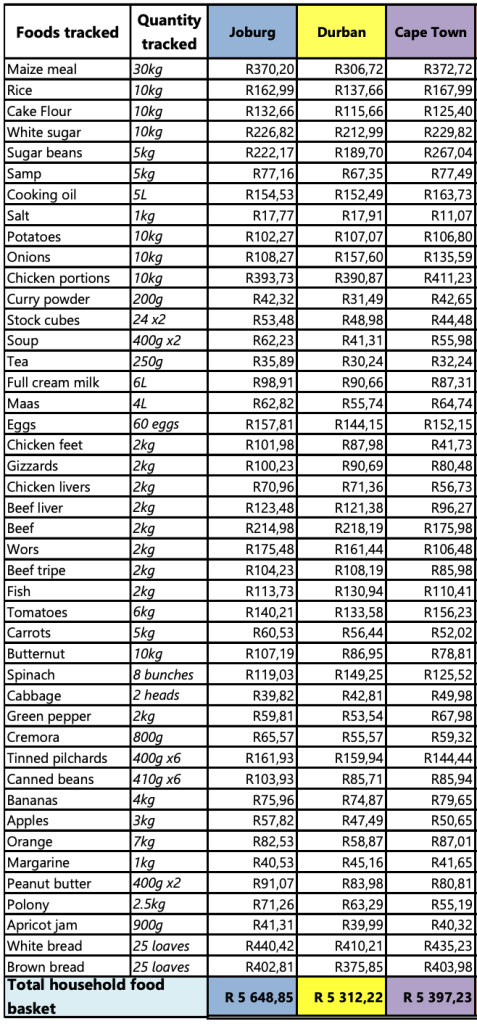
Johannesburg Tops the List Again as Grocery Prices Soar Beyond National Averages
Most Expensive Province for Groceries
Johannesburg holds onto the crown, but not the kind you want to wear.
In a time when every rand counts, Johannesburg remains the most expensive metro in South Africa for groceries in 2025. According to the latest Pietermaritzburg Economic Justice and Dignity (PMBEJD) report, a standard household food basket in Joburg now costs a whopping R5,648.85, R205.73 more than the national average and up 2.0% from the previous year.
This makes the City of Gold increasingly unaffordable for average South Africans trying to stretch their food budgets. While other cities like Cape Town and Durban are also experiencing inflation, Joburg continues to outpace them in price hikes, driven by rising meat costs, cereal inflation, and a surge in cooking oil prices.
READ: SPAR’s Ambitious Plan: Launching 40 High-End Grocery Stores Across South Africa
Food Prices Continue Their Climb
The PMBEJD tracks the prices of 44 essential food items across major metros. In June 2025, 34 of these items saw price increases, with seven showing double-digit inflation. Just 10 items became cheaper or remained stable.
Here are the major culprits behind the inflation:
- Beef products are the biggest offenders. The outbreak of foot-and-mouth disease and rising feed prices have driven meat inflation from 3.0% in April to 4.4% in May.
- Beef steak rose by 4.5%
- Stewing beef by 2.5%
- Beef mince by 1.7%
- Cereal products such as maize meal (14.2%) and samp (20.6%) are seeing double-digit inflation rates, making daily staples unaffordable for many.
- Oils and fats like sunflower oil and brick margarine saw annual increases of 7.6% and 7.9%, respectively.
- The cost of fish and seafood also climbed, with hake up 9.1% and fish fingers up 6.1%.
Metro Cost Comparison: Who’s Paying What?

Here’s how the food basket compares across the big three metros as of June 2025:
- Johannesburg: R5,648.85
Up R108.97 YoY | Up R38.38 MoM
Most expensive and R205.73 higher than the national average. - Cape Town: R5,397.23
Up R296.48 YoY | Down R31.95 MoM
Still R251.62 cheaper than Johannesburg despite a 5.8% annual increase. - Durban: R5,312.22
Up R184.39 YoY | Down R115.65 MoM
Cheapest metro in the country, yet still more expensive than in 2024.
CHECK OUT: From Checkers Sixty60 to Shoprite Sixty60: On-Demand Grocery Delivery Rolls Out Nationwide
Inflation Context
According to Stats SA, national food inflation for May stood at 2.8%, unchanged from April. However, inflation in food and non-alcoholic beverages (NAB) increased by 0.8%, now sitting at 4.8%, the highest level since March 2024.
This inflation is being driven mainly by meat, cereal, and oil-based food items, staples in many South African homes.
Read How the New Grocery Store Beats Shoprite, Pick n Pay, and Checkers in Price
Cost of Living Impact
A monthly increase of R23.46 on a household basket might not seem like much, but when you’re already stretched thin, it stings. Year-on-year, the total increase of R190.36 on the national food basket is a clear signal that the cost of living is rising faster than wages or government support.
Most Expensive Province for Groceries: Summary of Key Stats (June 2025)
| Metro | Food Basket Cost | Annual Change | Monthly Change |
|---|---|---|---|
| Johannesburg | R5,648.85 | +R108.97 (2.0%) | +R38.38 (0.7%) |
| Cape Town | R5,397.23 | +R296.48 (5.8%) | -R31.95 (-0.6%) |
| Durban | R5,312.22 | +R184.39 (3.6%) | -R115.65 (-2.1%) |
| National Avg | R5,443.12 | +R190.36 (3.6%) | +R23.46 (0.4%) |
The Last Count
If you’re shopping in Johannesburg, brace your wallet. While the city might be the economic heart of South Africa, it’s also where grocery budgets go to suffer. Keep an eye on the PMBEJD monthly reports and Stats SA updates to stay ahead of price movements, and if you’re in Durban, count your blessings.
Also read: How to Save Money on Groceries in 2025



